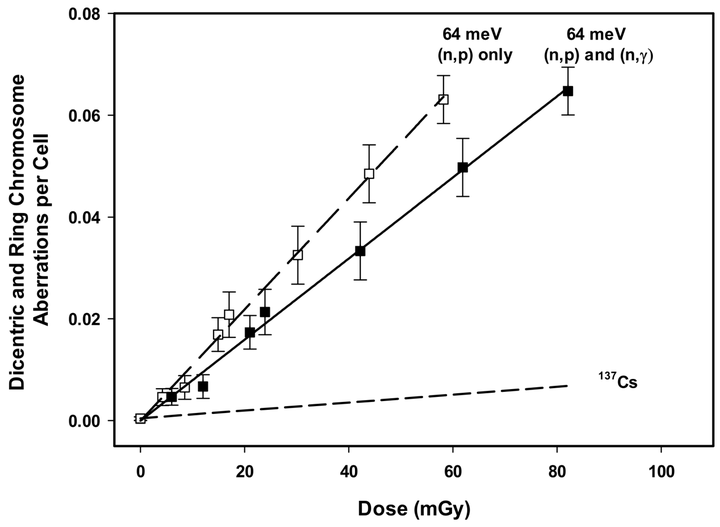High-Accuracy Relative Biological Effectiveness Values Following Low-Dose Thermal Neutron Exposures Support Bimodal Quality Factor Response with Neutron Energy
 Image credit: Laura Paterson
Image credit: Laura PatersonAbstract
Theoretical evaluations indicate the radiation weighting factor for thermal neutrons differs from the current International Commission on Radiological Protection (ICRP) recommended value of 2.5, which has radiation protection implications for high-energy radiotherapy, inside spacecraft, on the lunar or Martian surface, and in nuclear reactor workplaces. We examined the relative biological effectiveness (RBE) of DNA damage generated by thermal neutrons compared to gamma radiation. Whole blood was irradiated by 64 meV thermal neutrons from the National Research Universal reactor. DNA damage and erroneous DNA double-strand break repair was evaluated by dicentric chromosome assay (DCA) and cytokinesis-block micronucleus (CBMN) assay with low doses ranging 6–85 mGy. Linear dose responses were observed. Significant DNA aberration clustering was found indicative of high ionizing density radiation. When the dose contribution of both the 14N(n,p)14C and 1H(n,γ)2H capture reactions were considered, the DCA and the CBMN assays generated similar maximum RBE values of 11.3 ± 1.6 and 9.0 ± 1.1, respectively. Consequently, thermal neutron RBE is approximately four times higher than the current ICRP radiation weighting factor value of 2.5. This lends support to bimodal peaks in the quality factor for RBE neutron energy response, underlining the importance of radiological protection against thermal neutron exposures.